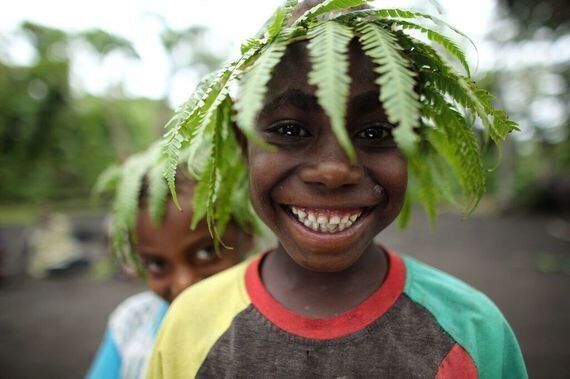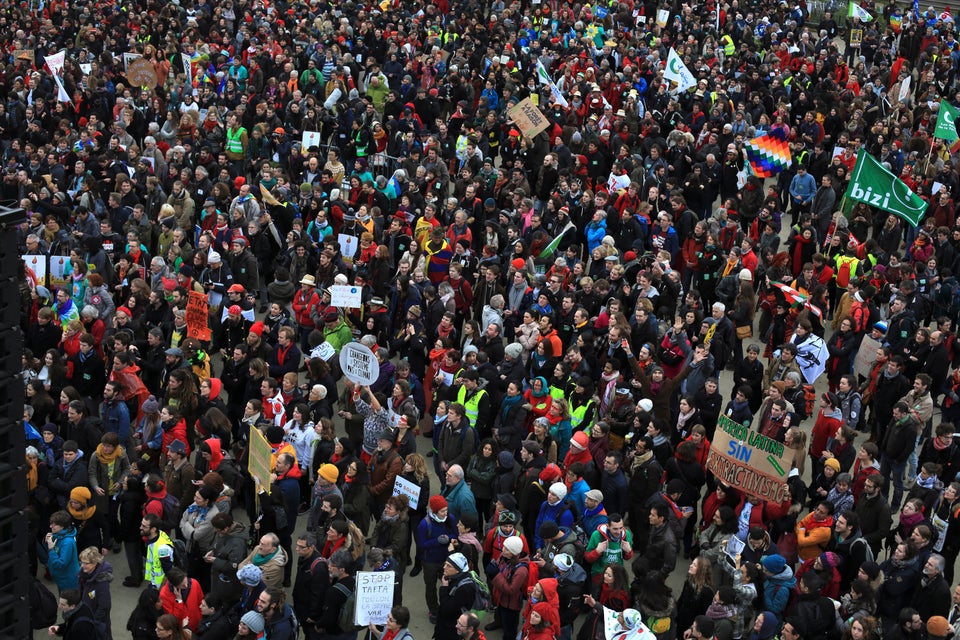April 22 is Earth Day, so it is fitting that this day has also been chosen for world leaders to sign one of the most significant international agreements to protect our planet in recent history.
Today, Canadian Prime Minister Justin Trudeau joins 196 other heads of state in New York to officially sign the Paris Agreement -- a global commitment to address the growing impact of climate change, with a focus on reducing greenhouse gas emissions. It will enter into force in 2020.
The signing of the Paris Agreement is a landmark occasion. As the world's first comprehensive climate agreement, it moves us one step closer to achieving the sustainable world we want.

Why is it so important?
Children disproportionately affected by climate change
Children around the world are disproportionately vulnerable to the impacts of climate change. With extreme weather events becoming more frequent, children are at greater risk of disease and death, along with malnutrition from changing agricultural yields. As families also struggle to maintain their livelihoods and to avoid separation that can occur with sudden onset disasters, children also become exposed to the dangers of exploitation, violence and abuse.
It is our collective responsibility to leave a sustainable world for our children and their children.
Many of the countries that are the most susceptible to the effects of climate change are also the ones that have the highest number of children as a share of their overall population.
Curbing greenhouse gas emissions therefore isn't just about improving the air we breathe. It's about so much more. It's about helping to protect the most vulnerable. It's about making sure we leave behind a world that is safer, cleaner and more sustainable for generations to come.

Canada at forefront of innovative climate finance
Canada is at the forefront of innovative ways to finance global climate action, including through participation in the international Green Climate Fund, the global platform for investments in low-emission and climate-resilient development, and by working to mobilize private sector investment through the G7 African Renewable Energy Initiative. Canada is well-placed to continue to play an international leadership role in these areas.
Canada took a welcome step forward in December with a commitment of $2.65 billion over five years to help address climate change in developing countries. This will go a long way to securing the future of millions of children and their communities. Funding for climate adaptation and investment in disaster risk reduction is essential to ensure that vulnerable children and communities are better able to cope and more resilient to the effects of climate change.
We are encouraged by the commitments made in Paris to support the poorest and most vulnerable countries, including specific commitments to the Least Developed Countries Fund to support critical adaptation action; support for investments to improve Climate Risk and Early Warning Systems (CREWS) and Climate Risk Insurance.

The Paris Agreement will build on this momentum. It commits countries to keep the rise in global temperatures well below two degrees Celsius compared to pre-industrial times, while striving to limit them even more to 1.5 degrees. It calls on developed countries to give $100 billion annually to help developing countries and emerging economies combat climate change and foster greener economies. It tasks countries with preparing and publishing ambitious greenhouse gas reduction targets. And, it sets the goal of a carbon-neutral world sometime after 2050 but before 2100.
Sustainable energy a game changer for children
As the world enters this new era of climate action, we encourage Canada and all other nations to continue putting children first. We must act to help children and communities in vulnerable countries to adapt to current and future climate change and to ensure resilience to future challenges.
Low-carbon development is crucial for the future of children and can pave a path to long-term sustainable development without increasing emissions. Low-carbon investments can benefit the most disadvantaged children and produce a win-win for children and the climate.
Sustainable energy can be a game changer for children and sustainable energy solutions can provide major opportunities in terms of improving their health, education, well-being and development.
Low-carbon investments can benefit the most disadvantaged children and produce a win-win for children and the climate.
It is our collective responsibility to leave a sustainable world for our children and their children, who will have to face the impact of climate change and environmental degradation.
Let's work together to make sure no more children die of household air pollution from using unsafe cookstoves. To make sure no more girls experience violence on poorly lit streets as they walk to collect fuel. To make sure schools are eco-friendly and cyclone-resistant in high-risk areas.
Let's make sure children, and their children's children, have the greatest chance to survive and thrive in this ever-changing world.
Follow HuffPost Canada Blogs on Facebook
MORE ON HUFFPOST:
